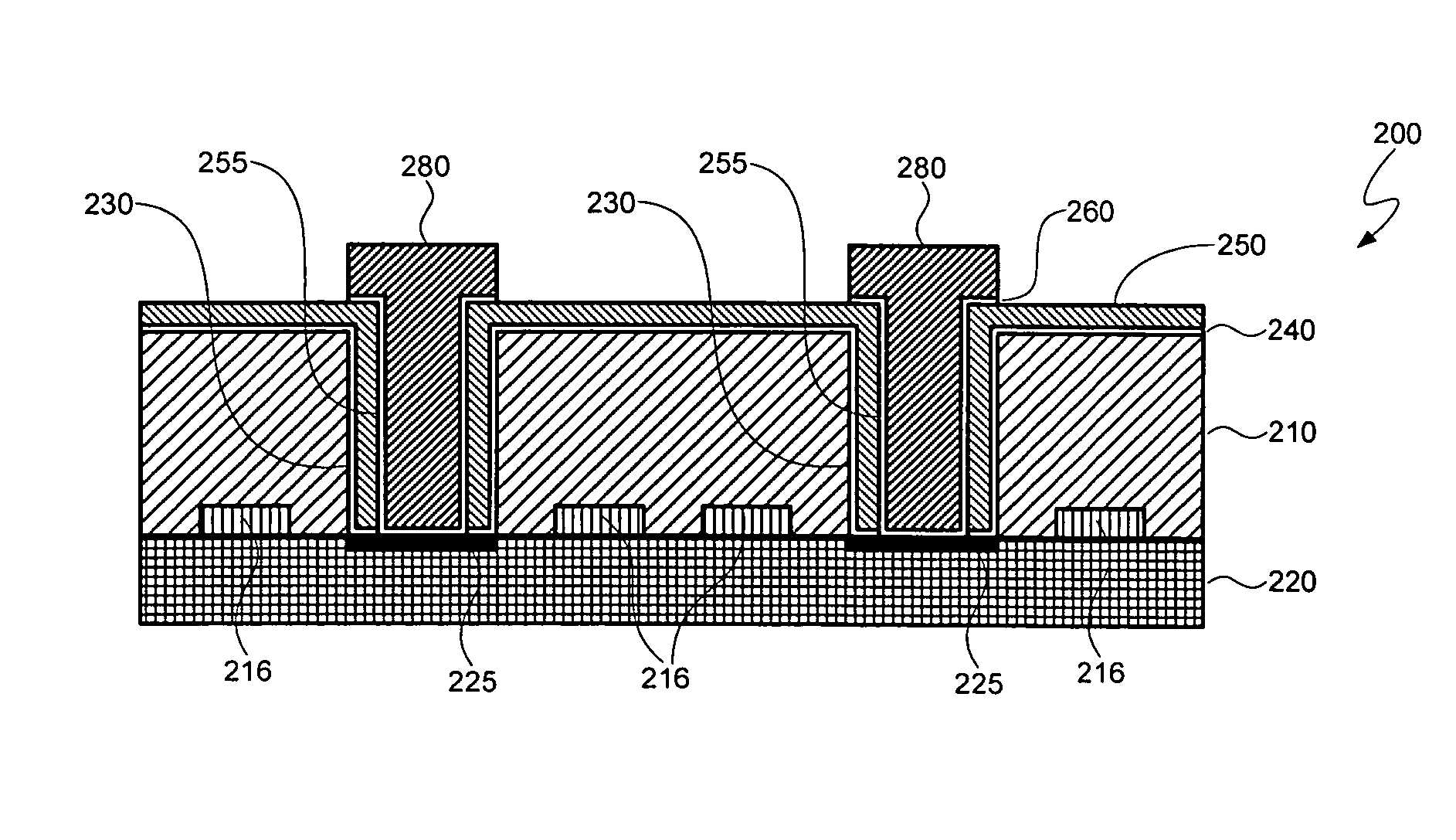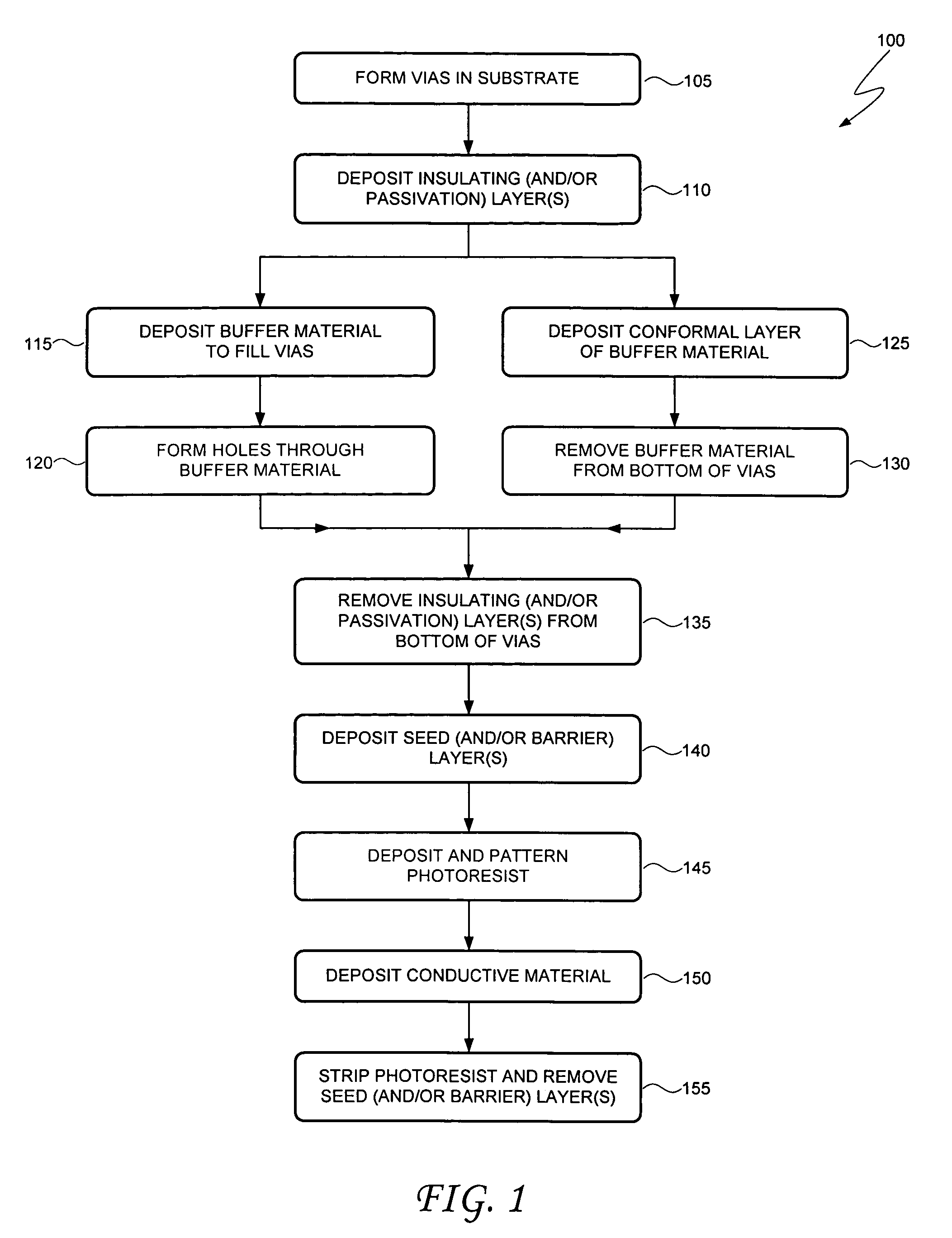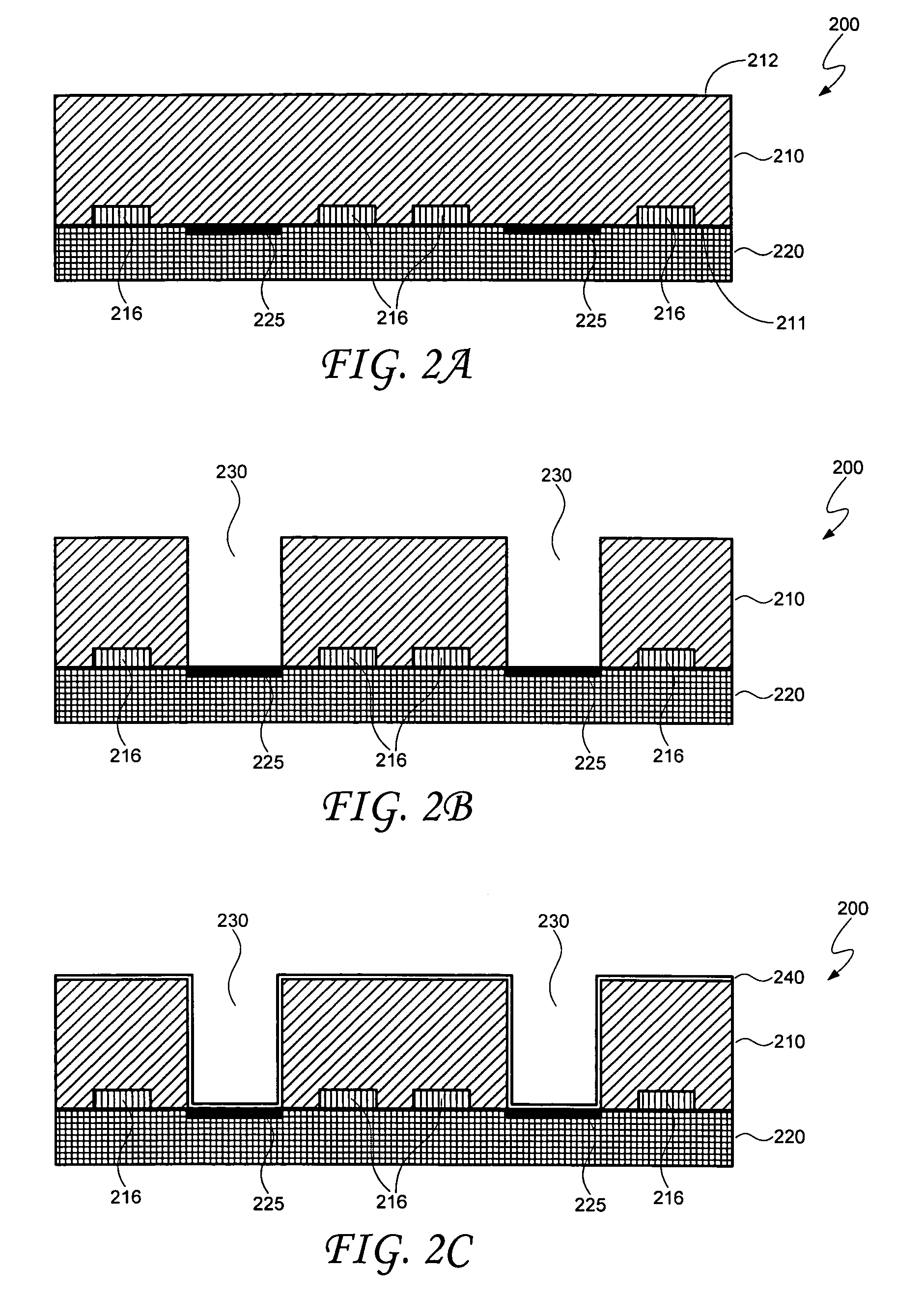Method of forming through-silicon vias with stress buffer collars and resulting devices
a technology of throughsilicon vias and buffer collars, which is applied in the direction of semiconductor devices, semiconductor/solid-state device details, electrical apparatus, etc., can solve the problems of significant stress in silicon and copper (or other conductive materials), reducing transistor performance, and reducing yield and reliability failures
- Summary
- Abstract
- Description
- Claims
- Application Information
AI Technical Summary
Benefits of technology
Problems solved by technology
Method used
Image
Examples
Embodiment Construction
[0009]Turning now to FIG. 1, illustrated is an embodiment of a method 100 of forming a via having a stress buffer collar. Embodiments of the method 100 shown in FIG. 1 are further illustrated in the schematic diagrams of FIGS. 2A through 2L, and reference should be made to these figures as called out in the text below.
[0010]Referring to block 105 in FIG. 1, one or more vias are formed in a substrate. This is illustrated in FIGS. 2A and 2B. Referring first to FIG. 2A, a substrate 200 is shown, this substrate including a base layer 210. In one embodiment, the base layer 210 comprises silicon (Si); however, it should be understood that the substrate may comprise any other suitable material or combination of materials. The substrate's base layer 210 may be viewed as having a “front side”211 and a “back side”212 (the substrate 200 is depicted face down in the figures). It should be understood, however, that the labels “front side” and “back side” are arbitrary and, further, that the vari...
PUM
| Property | Measurement | Unit |
|---|---|---|
| thickness | aaaaa | aaaaa |
| thickness | aaaaa | aaaaa |
| thermal expansion | aaaaa | aaaaa |
Abstract
Description
Claims
Application Information
 Login to View More
Login to View More - R&D Engineer
- R&D Manager
- IP Professional
- Industry Leading Data Capabilities
- Powerful AI technology
- Patent DNA Extraction
Browse by: Latest US Patents, China's latest patents, Technical Efficacy Thesaurus, Application Domain, Technology Topic, Popular Technical Reports.
© 2024 PatSnap. All rights reserved.Legal|Privacy policy|Modern Slavery Act Transparency Statement|Sitemap|About US| Contact US: help@patsnap.com










